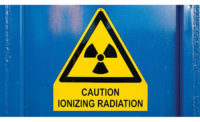“Can it be… five years later… the recovery?” joshed The Economist in its cover story take on the economy, showing cartoon fortune hunters hacking past snakes and thick dark jungle to stumble upon a hidden treasure chest.
Officially, the U.S. recovery began in the middle of 2009, while many safety manufacturers and distributors were still wallowing in the depths.
It’s been a slow, inch-by-inch climb back to respectable sales, we don’t have to tell you. It’s been an uneven recovery (“rebound” sounds too quick and energetic; it’s more like a rehabilitation), with some markets and some parts of the country faring better than others.
No, there hasn’t been any hootin’ and hollerin’ over this comeback. It’s a strange one, with national unemployment at press time still above eight percent. No one has gotten much of a raise. You still might find 6-8 “For Sale” signs on a single block.
No double-dip
But as we head into mid-year 2012, there is sufficient evidence to conclude that the recovery from the Great Recession of 2007-2009 has rather quietly established itself and put to rest fears of a double-dip recession.
This is not a typical recovery led by housing starts, auto sales, consumer spending, or a war. It’s been powered by small to mid-size manufacturing accounts typical of distributors like W.W. Grainger. Grainger enjoyed its best year ever for sales in 2011 — $8.1 billion — with sales up 12 percent and net earnings up 29 percent.
In 2011, Grainger introduced more than 80,000 new products, transacted more than $2 billion in sales through eCommerce and added more than 1,300 net new jobs, while delivering a total shareholder return of 38 percent.
Dull but dependable
The MRO market may be dull, but it’s dependable; it keeps economic engines going.
All Grainger customer end markets, except reseller due to the oil spill in 2010, posted growth above fourth quarter 2010, lead by what Grainger calls “a strong increase in the heavy manufacturing customer end market.”
Airgas’s performance tells a similar tale. One the largest safety distributors in the U.S., Airgas closed its third quarter on December 31, 2011, with business trends reflecting “continued volume growth across the company’s customer base with particular strength in large manufacturing, petrochemical, and energy customers,” according to the company.
“We continue to see evidence of steady economic growth in U.S. manufacturing, as well as in our petrochemical and energy customers,” said Airgas Chief Executive Officer Peter McCausland, in a prepared statement. “Strong growth in welding and automation equipment revenue is outpacing the remainder of our hardgoods portfolio, which is an encouraging indicator of future activity in our industrial customer base.”
A solid first quarter 2012 was delivered by MSC Industrial Direct Co., Inc., with net sales increasing 15.4 percent to $545.7 million and net income increasing 25.8 percent to $59.8 million.
Market conditions reflect a moderate growth environment as customers are generally more optimistic as activity levels remain solid. They remain focused on productivity and cost reduction that bodes well for MSC, said Erik Gershwind, president and chief operating officer.
Reasons for optimism
Over on the safety manufacturers’ side, MSA reported record net sales for the year ending December 31, 2011 — $1.173 billion, compared with $977 million in 2010, a 20-percent jump. Net sales in the fourth quarter were a record $304 million. For the full year, earnings increased 83 percent.
For the quarter, sales in MSA’s North American segment increased $13 million, or 9 percent, when compared to the same period of 2010. Sales of gas detection products increased $7 million while sales of head, eye and face protection products increased $3 million on higher shipments to core industrial markets.
“We remain optimistic regarding a strengthening U.S. economy,” said MSA President and CEO William Lambert.
MSA’s CEO is not the only optimistic executive around. The Conference Board issued a forecast in March — “Cautiously Optimistic – the economy is poised to accelerate.” The economy is getting fundamentally stronger, according to Conference Board metrics, with a pick-up in hiring and “the drag from the state and local government sectors easing up as the most intense austerity measures look to be behind us,” said the board.
The patient is feeling better
“The U.S. economy seems to feel better than it did a few months ago,” the U.S. Chamber of Commerce reported earlier this year. “The economy has added an average of 200,000 jobs per month for the past six months. February’s auto sales were 25 percent above August’s, a bright spot in consumer automobile spending. Shifts and jobs are being added to auto plants in Ohio, Mississippi and Illinois. Each one of those jobs will create four more jobs in the multiplier effect of the industry’s satellite supply chain. Banks are lending more, factories are ramping up production, and even housing starts have turned up.”
A patchwork recovery
Still, this is not your father’s recovery, the typical recovery of past generations. Time calls it “a patchwork recovery.” A miner in Wyoming, where unemployment is only 4.2 percent, sees a different economic picture than an out of work construction carpenter in Nevada, where unemployment tops 11 percent.
The country is presently experiencing mini-booms in mining, auto factories, railroads, social networking start-ups, hospitals and convention centers. Unique niches are prospering: distillers expand in Kentucky as the country gets nostalgic for expensive single-barrel bourbons. In Logan, Utah, roughly one in five employees works in manufacturing, much of it focused on food production. Pepperidge Farm is expanding to meet demand for its Goldfish cracker. Milwaukee is selling more than beer. Steel, car parts and automation controllers are made in and around Brew City, and exports from Wisconsin are up 11 percent. Technology rules in Austin, Texas, where a growing number of IT and energy companies will add 45,000 jobs this year and next, and where Apple plans to double its workforce to more than 7,000.
The Manufacturers Alliance for Productivity and Innovation, or MAPI, predicts a nuts-and-bolts recovery in the next few years. U.S. manufacturing production growth will outpace growth in the overall economy, climbing 4 percent in 2011, 3 percent in 2012 and 4 percent in 2013. By comparison, gross domestic product (GDP) is forecast to grow 2.1 percent in 2012 and 3.3 percent in 2013.
“The growth is being led by the energy, transportation and industrial equipment industries. We believe the continuing pickup in domestic auto production will also be a major driver of overall economic growth next year,” Daniel J. Meckstroth, chief economist at MAPI, said. “In addition, firms are profitable and have the need to spend more for both traditional and high-tech business equipment, and reasonably strong growth in emerging economies is still driving U.S. exports.
Seeing the light
It’s not surprising, given these trendlines and forecasts, that U.S. manufacturing execs are finally emerging from several years inside their recession-battered bomb shelters, rubbing their eyes to see the clouds parting. At the recessionary low point in 2009, 46.3 percent of respondents to the National Association of Manufacturers (NAM)/IndustryWeek Survey of Manufacturers had a positive business outlook. By fourth quarter 2011 the proportion of optimistic manufacturers had risen to 80.2 percent, comparable to pre-recessionary figures.
Plus, about 72 percent of manufacturers expect sales to increase over the next 12 months, with an average expected sales gain of 4.4 percent. Roughly half forecast sales to grow by at least 5 percent, while one-in-five expect sales to climb by more than 10 percent.
To be sure, despite encouraging news, 2012 is no kind of breakout year for the U.S. economy. This will never be a repeat of the 1960s, when recession was followed by a drop in unemployment to below four percent, or even the 1990s, when recession in the early Clinton years was followed by eight straight years of falling unemployment.
Wobbly confidence
Consumers lead the charge in those economic breakouts, spending with confidence due to job security, rising housing prices, and future income gains. That’s not the case in 2012.
Yes, manufacturing employs nearly 12 million workers directly and almost seven million in support services. That’s a lot of hard hats, safety glasses, FR garments, steel-toe boots, gloves and earplugs. A lift-off in construction activity would add to the sales of hi-viz clothing, heat stress products, and other PPE.
But who’s confident enough to build a new home, a second home, an apartment complex, hotels, or new office space? The average working class American hasn’t gotten a raise since the 1970s, according to Time magazine. The credit-spending tsunami has long since receded. There are good jobs at the top and plenty at the bottom, but not enough in the middle. Consumers still constrained by flat incomes and credit limits are beginning to come back to Best Buy and Lowe’s, but they’re not spending like they have an ATM in the basement.
Safety manufacturers and distributors will pine for the old days (pre-2007), live fairly comfortably with the current times, and grin and bear it until new housing starts, infrastructure rebuilding, and overall construction comes alive again.



